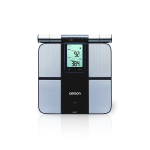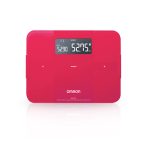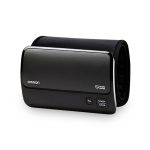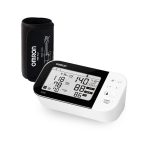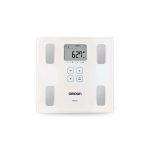Making Your Weight Loss Journey Smoother with Body Composition Monitor
August 2, 2023 2024-01-10 15:15Making Your Weight Loss Journey Smoother with Body Composition Monitor

Making Your Weight Loss Journey Smoother with Body Composition Monitor
The weight loss journey can be both exciting and challenging. Traditional scales provide a basic assessment of your weight, but they do not provide a complete picture of your body’s other critical factors. It’s time to embrace a more innovative approach beyond measuring your weight. Incorporating a body composition monitor into your routine can provide valuable insights that help you make more informed decisions about your health and fitness goals.
Overweight and Obesity are two distinct conditions. You need to define each one independently. According to the World Health Organization (WHO), 39% of adults aged 18 years and over were overweight, and 13% were obese. Since 1980 , the prevalence of obesity has more than doubled. According to the National Family Health Survey (NFHS)-5, 34.2% of adults in India are overweight. The prevalence of overweight and obesity is expected to increase considerably in India by 2040.[1][2][3]
A body composition monitor can assist you in tracking your body composition and ensuring you’re on track to meet your weight loss objectives. A body composition monitor is a powerful tool that uses advanced technology to provide a comprehensive analysis of your body’s composition.
The Omron HBF-702T Body Composition Monitor goes beyond displaying mere numbers, providing a comprehensive analysis of your body composition, making your weight loss journey smoother and more effective.[4]
It measures 9 key metrics such as:
- Body Age: This metric goes beyond chronological age, taking into account a variety of indicators to assess the age of your body’s health. It’s a motivating indicator that can change as you make positive lifestyle changes.
- Weight: While weight is a fundamental measurement, it’s just the tip of the iceberg. The real magic lies in understanding how this weight is distributed among different components.
- BMI (Body Mass Index): BMI is a ratio of your weight to your height and is often used to categorize individuals into weight ranges. However, it’s essential to remember that BMI doesn’t differentiate between fat and muscle mass.
- Body Fat Percentage: This metric indicates the proportion of your body’s weight that comes from fat. It’s a more accurate reflection of your health than weight alone, as it considers the quality of your weight.
- Segmental Subcutaneous Fat: This measurement divides your body into segments, offering insights into the distribution of subcutaneous fat (the fat just beneath the skin). This information is valuable for understanding fat accumulation patterns.
- Segmental Skeletal Muscle: Like subcutaneous fat, segmental skeletal muscle divides your body into segments to reveal the distribution of muscle mass. It helps you identify areas that might need more attention during your workouts.
- Subcutaneous Fat and Skeletal Muscle Percentage: These percentages show how much of your body’s composition is comprised of subcutaneous fat and skeletal muscle. This insight can guide your fitness routines and nutritional choices.
- Resting Metabolism: Your resting metabolic rate (RMR) is the number of calories your body burns at rest to maintain basic functions. This metric provides a foundation for designing a calorie-conscious diet plan.
- Visceral Fat Level: Visceral fat surrounds your organs and is linked to various health risks, including heart disease and diabetes. Monitoring your visceral fat level helps you take proactive steps towards reducing potential health hazards.
- Each of these 9 metrics contributes to a holistic understanding of your body’s composition and health. By tracking and analyzing this comprehensive data, you can make informed decisions about your fitness routines, dietary choices, and overall lifestyle.
Here’s how these metrics can benefit you:
- Personalized Approach: The data helps you create a tailored fitness and nutrition plan that aligns with your body’s unique needs and goals.
- Motivation and Accountability: Seeing progress in various metrics, not just weight, can be incredibly motivating and help you stay accountable in your health journey.
- Health Insights: Metrics like visceral fat level and body age provide insights into potential health risks, motivating you to make positive changes.
- Efficient Workouts: Segmental data guides you to target specific areas during your workouts, leading to a more balanced physique.
- Long-term Wellness: By focusing on overall composition, you’re not just chasing short-term weight loss but working towards sustainable well-being.
- Incorporating a body composition monitor into your routine isn’t just about numbers – it’s about understanding your body on a deeper level. It’s about making empowered choices that lead to a healthier, happier you.
Wrap-Up
If you’re looking for a way to make your weight loss journey smoother, a body composition monitor can be a valuable tool. By tracking your body composition, you can identify areas for improvement and make informed decisions about your diet and exercise routine.

